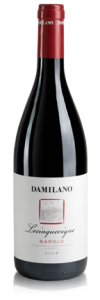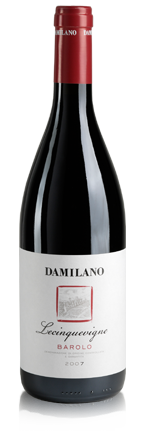As I work through my continued studies, I find myself in Italy once again. Although the country offers a bountiful diversity of wines, keeping it all straight is no small task. I find that a good way to study a region is to drink your way through them; but not all at once. One has to have some temperance and some balance between tasting and ending up “brahms and list.”
A Barolo I recently received inspired me to begin my learning through consumption in Piedmont. Inside this northwestern province, just southeast of Alba, is the small but renowned Barolo. Gaining its DOC in 1966 and DOCG in 1980, Barolo is cooler and higher in altitude then its “sister” property, Barbaresco, to the north. It now nurtures 1700 ha of vines, a 50% increase since 1990.
The growing area of Barolo is truly a tale of two different areas, the Serralunga Valley in the east and the Central Valley to the west. The eastern viticultural areas have a more compressed soil composition of loose calcareous limestone and the wines tend to be structured, intense, tannic and usually age very slowly (Serralunga d’Alba, Monforte d’Alba and Castaglione Falletto). The west has similar soil with more compaction and clay. These wines are generally softer, perfumed, fruity and approachable earlier (Barolo and La Morra).
All Barolo is made from the Nebbiolo grape, coming from the word nebbia meaning fog. It is unsure if the fog reference is attributed to the cloudiness of the grape skin or an allusion to the persistent fog present in the area. Nonetheless, this small thick-skinned grape accounts for less than 10% of all Piedmontese plantings. It is the first to bud and last to ripen which makes it prone to frost damage. As one would expect, there is a significant variation among vintages with the best having a long warm summer and a dry autumn.
One of the strengths of this area is its ability to evolve in keeping with global tastes. Traditionally, the grapes were harvested later in the season and subjected to a maceration and fermentation time of 8 to 10 weeks. The wines were then aged in large botti, often becoming oxidized, for 3 years. The result was excessively tannic wines with a faded color that had dried fruit aromatics. The color was so faded that Barbera was often added to restore the color (and add some ripe fruit nuances back in the wine).
“Modern” Barolo has many different styles depending on the growing area and the decisions of the producer. Generally, the grapes are harvested earlier (first half of October) with the fermentation being shorter (1 – 2 weeks) and temperature controlled. The wines are aged in smaller barriques for a minimum of 2 years and one additional year in bottle before release. The results are wines with fuller fruit and softer more rounded tannins.
Damilano has long been associated with Barolo dating back to 1890 when Giuseppe Borgogno, the current owner’s great grandfather, began to make his own estate wine. What started as 12 acres of vines grew over the years to their current 180 acre holdings. Paolo, Mario and Guido Damilano, the fourth generation of winemakers, have the pleasure of working with an expanded portfolio to include individual Cru wine in Barolo, varying wines from Barbera and Dolcetto, Moscato, and even Grappa.
The particular wine I received, the 2011 Barolo Lecinquevigne, is produced with100% Nebbiolo grapes sourced from vineyards in five different towns: Barolo, Verduno, Grinzane Cavour, La Morra and Novello and aged for 2 years in barrel and one in bottle.
Tasting Note
Appearance: Medium garnet with presence of tears
Nose: Developing wine with a medium intensity and aromas of intense violets, blackberry, dried figs, prune, unprocessed leather and wet tobacco
Palate: D ry, medium alcohol, medium body, medium (-) intensity, medium (+) mouthwatering acidity, medium fine grained green gritty tannins, medium (+) length with a dried fruit, leather and tannic finish Flavors of dried red and black fruit, pipe tobacco and dried mushroom.
ry, medium alcohol, medium body, medium (-) intensity, medium (+) mouthwatering acidity, medium fine grained green gritty tannins, medium (+) length with a dried fruit, leather and tannic finish Flavors of dried red and black fruit, pipe tobacco and dried mushroom.
This wine is available to drink now if you are accepting of a tannic wine. The developing characteristics suggest another 3 – 5 years aging would be interesting. Pair with beef or lamb shank and root vegetables for an evening to remember.


 Masters of Wine
Masters of Wine Wine and Spirits Education Trust
Wine and Spirits Education Trust